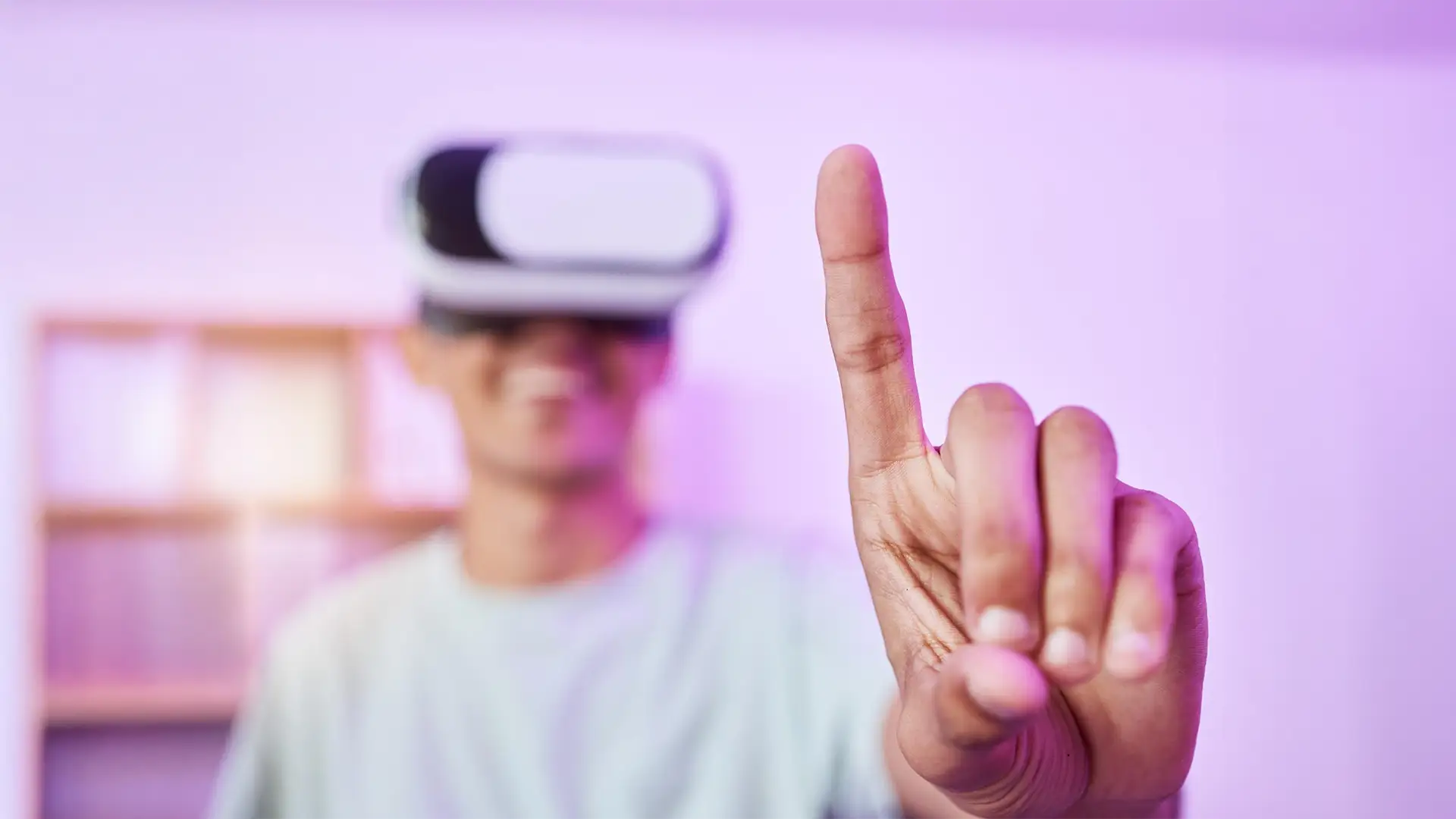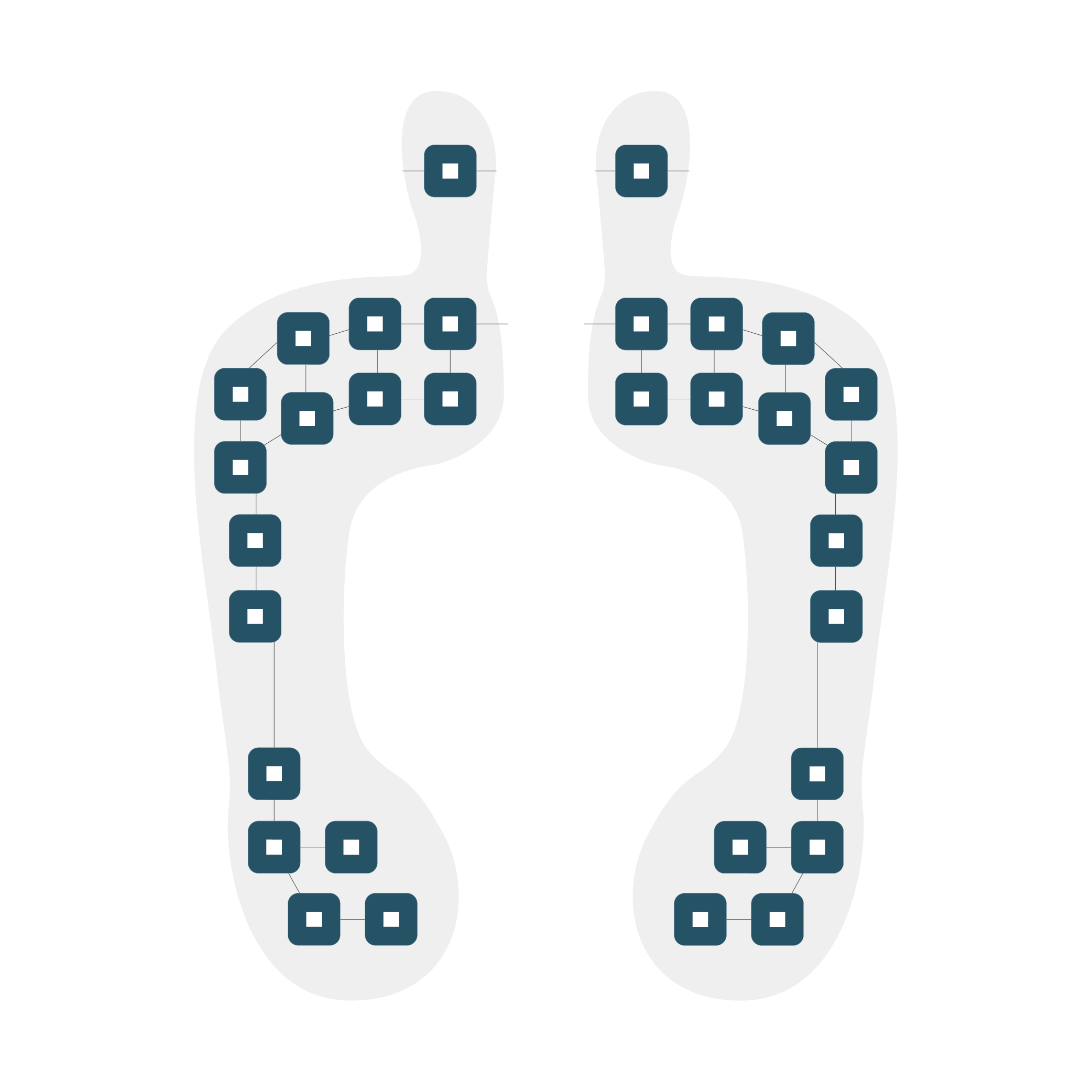Virtual reality has changed the way we interact with digital environments, offering immersive experiences that closely mirror the real world. But behind the scenes, what really makes these lifelike simulations possible are advanced sensors and sensor fusion software that track movement and orientation with great precision. VR sensors play a vital role in everything from gaming and training to healthcare and industrial design.
Gesture recognition in VR is a real-time system that turns human motion, especially hand and body gestures, into virtual actions. To feel natural and immersive, this system must track motion with high accuracy and low latency. But achieving this is difficult, largely due to sensor noise and drift, two major challenges in motion tracking.
At 221e, we specialize in developing high-performance sensing solutions, combining innovative hardware with intelligent algorithms that make VR smoother, more accurate, and more responsive. This article explores the tech behind it all, various applications and how it’s propelling VR development forward.
What Are VR Sensors and Why Do They Matter?
VR sensors are built on IMUs (Inertial Measurement Units) that detect motion, orientation, and position in real time. These sensors send information to a system that interprets the user’s movements and actions. Sensor data helps create a believable and interactive virtual environment.
Core Sensor Technologies in Virtual Reality
- Inertial Measurement Units (IMUs)
Miniature IMUs are fundamental to modern VR systems, providing real-time tracking of head, hand, and body movements. Typically integrating a gyroscope, accelerometer, and sometimes a magnetometer, these sensors work together to capture rotation, linear motion, and orientation.
These wireless IMUs enhance immersion by eliminating the constraints of cables. By transmitting data via Bluetooth or Wi-Fi, they allow for unrestricted movement, crucial in full-body VR experiences where physical freedom is essential for realism and comfort.
When combined with sensor fusion AI, IMUs deliver precise, stable orientation and motion tracking. This process blends data from the internal sensors to reduce drift and noise, ensuring smooth and accurate representation of user movement in virtual environments. This is achieved by fusing accelerometer, gyroscope, and optional magnetometer inputs into a unified orientation estimate using filtering algorithms such as Kalman or complementary filters. This is achieved by fusing accelerometer, gyroscope, and optional magnetometer inputs into a unified orientation estimate using filtering algorithms such as Kalman or complementary filters.
- Optical Sensors
While not based on inertial technology, optical sensors are still a key part of many VR systems. These include external or internal cameras that track physical movement using light. Optical systems are often used alongside IMUs, and when combined with IMUs via sensor fusion this can significantly improve positional accuracy and correct for sensor errors.
The Sensor Fusion Effect
When it comes to interpreting motion data in real time, raw sensor outputs alone are not sufficient.
Core Challenge: In gesture recognition, especially with inertial sensors like IMUs, the system must accurately track acceleration, rotation, and orientation over time. However, two key issues make this difficult:
- Noise: Random fluctuations in sensor signals due to environmental factors, vibrations, or hardware limitations. It introduces small but frequent errors in short-term motion data.
- Drift: Gradual accumulation of small errors over time, leading to inaccuracies in integrated acceleration or gyroscope data, which in turn distort estimated position or orientation. Even if the user’s hand is still, the system may incorrectly perceive motion.
In practical terms, these two combined result in shaky, jumpy, or slowly “sliding” gestures in VR, even if the user’s hand is perfectly still. This degrades the sense of immersion and can even lead to input errors or user fatigue.
Sensor fusion is the primary technique for counteracting drift and noise in such systems. It integrates multiple streams of motion data to generate a more accurate, stable model of movement. With IMU sensor fusion, movements become smoother, tracking remains stable, and users enjoy a more natural experience, even during fast or complex actions.
Even with a single IMU, advanced sensor fusion can:
- Filter out high-frequency noise using complementary or Kalman filters.
- Detect and isolate intentional gestures from background motion.
- Compensate for gravity, orientation shifts, and user-specific movement patterns.
- Infer spatial context and reset drift through consistent motion signatures (e.g., recognizing a “pinch” gesture as a known anchor point).
With multiple sensors, sensor fusion becomes even more robust, allowing automatic drift correction through cross-sensor calibration.
Specialized Motion Processing Engines, like MPE
MPE operates on-device and in real time, offering a combination of filtering, calibration, and AI-enhanced interpretation that improves precision and robustness.
Key capabilities of our MPE include:
- High-precision sensor fusion that fuses acceleration, gyroscope, and optional magnetometer data into a consistent motion profile.
- Drift compensation, using smart recalibration strategies and reference gesture anchors to reset orientation or velocity baselines.
- Bias and temperature correction, to eliminate long-term or environment-induced errors.
- Robust noise filtering, isolating genuine user gestures from random motion artifacts, tremors, or external disturbances.
Edge AI: Real-Time Intelligence
IMU AI algorithms extend the capabilities of sensor fusion by predicting motion patterns, correcting anomalies, and adapting to varying environments. They also help reduce common issues like drift and latency, which can make users feel dizzy or disconnected.
Running gesture recognition directly on the wearable device, via edge AI, is essential to delivering low-latency, reliable interaction without dependence on cloud connectivity. Edge AI enables:
- Real-time processing of gesture data (e.g., high-rate IMU streams, often up to 1000Hz) with low-millisecond latency.
- On-device computation, ensures that user data remains private.
- Adaptive gesture modeling, where AI learns and adjusts to unique user styles over time.
- Continuous feedback loops, dynamically corrects drift or gesture misclassification.
Edge AI makes gesture recognition scalable, responsive, and resilient, which is ideal for untethered VR/AR environments.
Real-World Uses of Gesture Recognition and VR
Today’s VR platforms are powered by sophisticated gesture recognition systems built on IMUs, edge AI, and sensor fusion engines like MPE (Motion Processing Engine). These technologies work together to track movement with high precision, enabling gesture-based interaction in domains that extend far beyond gaming. By filtering out drift and noise in real time and running AI locally on the device, VR systems can recognize subtle finger and body gestures with minimal latency, even in untethered or high-mobility applications.
- Healthcare and Medical Training
In medical VR applications, gesture recognition is essential for simulating fine-motor skills such as suturing, laparoscopic manipulation or ultrasound probe handling.
- How it works: Using IMUs embedded in gloves or wristbands, MPE-based sensor fusion reconstructs hand trajectories with high angular precision. Combined with edge AI, the system detects complex gestures like pinching, rotating, or applying pressure, all critical to medical tool simulation.
-
Gestures recognized:
- Scalpel grip (precise finger alignment)
- Needle suturing arc (repetitive wrist rotations with angular precision)
- Rehabilitation movements (shoulder abduction, wrist flexion)
- Why it matters: Even small errors in movement can lead to incorrect outcomes in surgery or rehab. MPE suppresses drift and corrects sensor bias, , providing stable gesture tracking over extended sessions and reducing the need for frequent recalibration. Edge AI enables on-the-fly feedback, such as detecting poor form in a rehab exercise and guiding correction in real time.
- Sports and Performance Monitoring
Athletes rely heavily on kinematic precision and real-time feedback to optimize performance. Gesture recognition plays a vital role in detecting an athlete’s form, rhythm, and intent during training.
- How it works: IMUs worn on wrists, ankles, or even integrated into sportswear capture high-frequency motion. MPE processes raw acceleration and gyroscopic data, while edge AI classifies gesture patterns based on sport-specific models.
-
Gestures recognized:
- Golf swing analysis: full-body coordination, wrist rotation, swing path
- Tennis serve: shoulder rotation, follow-through motion, timing
- Running gait: foot strike, arm swing synchronization
- Weightlifting form: depth of squat, bar path, grip compensation
- Why it matters: Real-time gesture detection enables coaches and athletes to identify technique flaws instantly. MPE ensures that feedback is stable and reliable, even when IMUs encounter high-speed movements or vibration. Edge AI delivers this feedback locally, supporting live, on-field corrections without cloud dependence, reducing latency and improving reliability in dynamic environments.
- Automotive Simulation
Modern automotive training platforms use VR to model not just the environment, but also natural driver interaction through gesture control.
- How it works: IMUs placed on gloves or integrated into steering wheel/seat interfaces track hand movements and posture. MPE corrects for micro-drift that could distort gesture-based control inputs over time, while edge AI identifies specific interaction gestures with the virtual dashboard or vehicle systems.
-
Gestures recognized:
- Hand-over-hand steering
- Dashboard tapping/pressing (for infotainment or HUD interaction)
- Mirror adjustment gestures
- Turn signal engagement or shifting simulation
- Why it matters: Training requires realism. Gesture recognition allows users to manipulate controls naturally instead of relying on keyboard shortcuts or menus. If gestures are delayed or drifted, it can impair reaction training and reduce realism. The combination of sensor fusion and local inference keeps inputs aligned and consistent with the user’s real-world intent.
- Military and Emergency Training
High-intensity VR training requires accurate tracking of tactical and survival gestures such as weapon handling, signaling, or body positioning under duress.
- How it works: Full-body suits or modular wearables with IMUs are used to track motion across the torso, limbs and hands. MPE integrates these into a unified skeletal model, correcting for motion noise caused by gear vibration, impact, or terrain. Edge AI models interpret gestures within milliseconds, often without reliance on visual markers, which can be obscured in complex environments.
-
Gestures recognized:
- Crawling and low-profile movement
- Tactical hand signals (e.g., halt, flank, advance)
- Weapons reload or ready stance (hand-to-belt, chamber pull)
- Body shielding/crouch reflexes
- Why it matters: In these simulations, latency or misinterpretation can degrade realism and training effectiveness. Edge AI ensures that gesture classification remains responsive even during fast, complex motion. MPE prevents orientation drift that could otherwise cause a user’s avatar to “slide” or misalign from real-world posture, maintaining situational accuracy for coordinated team-based scenarios.
Benefits of Sensor Fusion AI in Gesture Technology
1. Hyper-Accurate Motion Tracking
Sensor fusion AI combines multiple IMUs to deliver very high gesture precision in orientation and motion tracking. Every movement, no matter how fast or subtle, is captured with exceptional fidelity, enabling natural, responsive interactions. This level of accuracy is critical in fields like medical simulation, robotics and high-performance VR training.
2. Instant Responsiveness, Zero Lag
Lag kills immersion. Advanced AI algorithms process sensor data on-device in real-time, virtually eliminating latency. The result: instant system response to user motion, ensuring smoother interaction, enhanced realism and reduced motion sickness.
3. Adaptive Learning & Personalization
Sensor fusion AI can adapt to individual users’ unique movement styles over time, enabling more personalized gesture recognition. This is vital in healthcare, training or accessibility applications where every user may move differently.
4. Scalability Across Devices and Use Cases
Sensor fusion AI works across different form factors (gloves, suits, headsets) and can scale from small consumer setups to enterprise-level deployments, offering flexibility for diverse applications from gaming to rehabilitation.
Conclusion
With access to innovative sensor fusion AI and wireless IMU technology, developers can create more immersive, accurate and enjoyable VR systems for users without being restricted by industry.
Whether it’s a sports training platform or a full-scale virtual experience, choosing the right platform and having access to expert guided machine learning are key components to success.
If you’re developing next-generation VR systems and need smart, reliable and compact sensing solutions, partner with us. Our expert team delivers high-quality VR sensors, advanced IMU sensor fusion and AI-supported tracking tools tailored for real-world use.
Explore our full range of precision sensor technologies today. Let’s build immersive experiences together, with the accuracy and performance only 221e can provide.

